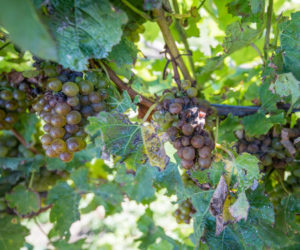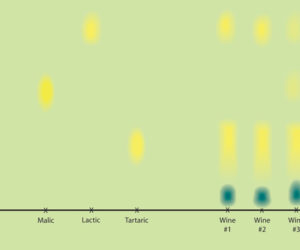
A fine wine gets better with age.” We’ve all heard the saying and accept it to be true, but the real saying should be, “A fine wine gets better when properly aged.” No matter the quality of the wine, I assure you that if you store it on the windowsill all summer it will be better poured down the drain come fall than in a glass. When properly stored, your homemade wines will keep longer and — depending on the type and care used when making it — improve with age. Time will soften what may be harsh tannins early in a bottle of Barolo, add complexity in aroma and taste to a Cabernet Sauvignon, and bring out tropical fruit aromas and minerality in Rieslings. Or, if done improperly, it may turn your hard work into cases of undrinkable “Sherry” or vinegar.
Before we get into how to store your wine, let’s briefly go over what wine should be cellared for extended periods of time. Typically, red wines are thought to be the ones worth cellaring because their higher tannin content from being fermented on the grape skins is beneficial for aging, however a white wine with high levels of acidity (and a correspondingly low pH), alcohol, and polyphenols including tannins is a good candidate too. Wines that are high in sugar, such as ice wines or Sauternes, also age well. In addition to the types of grapes, the quality of grapes is also of great importance. The highest-quality grapes make for the best wines, and it is only the best wines that are going to improve with extended aging. So wines from grapes that are under or overripe, have mold, or signs of insect damage should only be turned into wine intended to be consumed young. Another factor to making an age-worthy wine is making sure it is adequately sulfited.
So let’s say you’ve crafted a wine using high-quality fruit, it has no noticeable flaws (as flaws will be exacerbated over time), and has all of the potential to age gracefully based on the parameters outlined earlier. The next important part of aging wine is the environment the bottles are stored in. There are three important factors to consider when choosing a space to store your wine:
Storage temperature and humidity
The ideal storage temperature for wine is 54–59 °F (12–15 °C) with moderate humidity (in the 55–75% range). If you have a spot in the basement where you can keep the temperature in this range, great! If you don’t have a space you can keep at that temperature, at least store your wine in a place that will not be subject to frequent and drastic temperature changes. Temperature swings can produce changes in pressure and compromise the seal between the cork and neck of the bottle, leading to oxidation.
Light
You want to store your wine in a dark place where it will not be exposed to sunlight or other lights. Light exposure over time can trigger oxidation inside the bottle, and over the age of cellaring will wreak havoc on your stash. On a related topic, storing your wine in colored bottles will block some light and help protect your wine if you cannot find a completely dark area.
Vibration
The other factor to consider when looking for the best spot to store your wine is finding a vibration-free area. Vibrations can stir up any naturally occurring sediments and/or interfere with reactions necessary to the graceful development and aging of the wine.
Once you have found the right spot, the last thing to know is to always store your corked bottles on their side. If left upright, overtime the cork can dry out, allowing excessive oxygen through to your wine.
Follow these tips for storing your homemade wines (that are worth storing) and you should be able to let an oak-aged Chardonnay cellar for 4–8 years, or a tannin-rich Petite Sirah age for 15 years. But don’t just let them sit down there without periodically opening one of the bottles to make sure it hasn’t taken a turn for the worse (as if you needed to be told that!).







